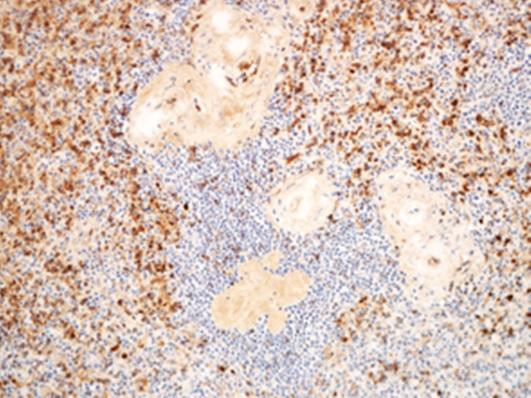Cookie preferences
This website uses cookies, which are necessary for the technical operation of the website and are always set. Other cookies, which increase the comfort when using this website, are used for direct advertising or to facilitate interaction with other websites and social networks, are only set with your consent.
Configuration
Technically required
These cookies are necessary for the basic functions of the shop.
"Allow all cookies" cookie
"Decline all cookies" cookie
CSRF token
Cookie preferences
Currency change
Customer-specific caching
FACT-Finder tracking
Individual prices
Selected shop
Session
Comfort functions
These cookies are used to make the shopping experience even more appealing, for example for the recognition of the visitor.
Note
Show the facebook fanpage in the right blod sidebar
Statistics & Tracking
Affiliate program
Conversion and usertracking via Google Tag Manager
Track device being used

| Item number | Size | Datasheet | Manual | SDS | Delivery time | Quantity | Price |
|---|---|---|---|---|---|---|---|
| ABE-10-3518-100 | 100 µg | - |
3 - 11 business days* |
2,558.00€
|
|||
| ABE-10-3518-500 | 500 µg | - |
3 - 11 business days* |
2,558.00€
|
If you have any questions, please use our Contact Form.
You can also order by e-mail: info@biomol.com
Larger quantity required? Request bulk
You can also order by e-mail: info@biomol.com
Larger quantity required? Request bulk
The monoclonal antibody 10-3518 reacts with the human Toll-like receptor 6 (TLR6). Toll-like... more
Product information "Anti-Human TLR6 (Clone: TLR6.127)"
The monoclonal antibody 10-3518 reacts with the human Toll-like receptor 6 (TLR6). Toll-like receptors (TLRs) are highly conserved throughout evolution. They play an essential role in initiating the innate immune response against infectious pathogens. In Drosophila, toll is required for anti-fungal response, while the related 18-wheeler is involved in antibacterial defence. In humans, ten members of the TLR family protein (TLR1 to TLR10) have been identified. TLRs recognize a wide variety of pathogen-associated molecular patterns from bacteria, viruses, and fungi and elicit a wide array of antimicrobial responses. Among TLRs, TLR6 is expressed on the cell surface of monocytes, monocyte-derived immature dendritic cells (iDCs), and neutrophils, but not on B, T or natural killer (NK) cells. Human TLR6 is a 796-aa type l transmembrane protein that is 74% identical with mouse. It contains an N-terminal signal peptide, 19 tandemly repeated extracellular leucine-rich motifs, and a cytoplasmic domain called Toll/IL-1R homology domain, as seen in other TLRs. TLR6 function has been studied mainly in mouse cells. Constitutive expression of TLR6 activates both the nuclear factor kappa-B (NFK-B) and Jun N-terminal kinase (JNK) pathways. Studies in human cells revealed that TLR6 and TLR2 colocalize at the plasma membrane of monocytes. Human TLR6 recognizes diacylated lipoprotein and peptidoglycan at the cell surface cooperatively with human TLR2. Thus, coexpression of TLR2 and TLR6 at the cell surface is crucial for recognition of diacylated lipopeptide and peptideoglycan and subsequent cellular activation in human cells. Protein function: Participates in the innate immune response to Gram- positive bacteria and fungi. Specifically recognizes diacylated and, to a lesser extent, triacylated lipopeptides (PubMed:20037584). In response to diacylated lipopeptides, forms the activation cluster TLR2:TLR6:CD14:CD36, this cluster triggers signaling from the cell surface and subsequently is targeted to the Golgi in a lipid-raft dependent pathway (PubMed:16880211). Acts via MYD88 and TRAF6, leading to NF-kappa-B activation, cytokine secretion and the inflammatory response. Recognizes mycoplasmal macrophage-activating lipopeptide-2kD (MALP-2), soluble tuberculosis factor (STF), phenol-soluble modulin (PSM) and B.burgdorferi outer surface protein A lipoprotein (OspA-L) cooperatively with TLR2 (PubMed:11441107). In complex with TLR4, promotes sterile inflammation in monocytes/macrophages in response to oxidized low-density lipoprotein (oxLDL) or amyloid-beta 42. In this context, the initial signal is provided by oxLDL- or amyloid- beta 42-binding to CD36. This event induces the formation of a heterodimer of TLR4 and TLR6, which is rapidly internalized and triggers inflammatory response, leading to the NF-kappa-B- dependent production of CXCL1, CXCL2 and CCL9 cytokines, via MYD88 signaling pathway, and CCL5 cytokine, via TICAM1 signaling pathway, as well as IL1B secretion (PubMed:11441107, PubMed:20037584). [The UniProt Consortium]
| Keywords: | Anti-TLR6, Anti-CD286, Anti-Toll-like receptor 6, Monoclonal Antibody to Human TLR6 (Clone : TLR6.127) |
| Supplier: | Abeomics |
| Supplier-Nr: | 10-3518 |
Properties
| Application: | FC, IP, IHC |
| Antibody Type: | Monoclonal |
| Clone: | TLR6.127 |
| Conjugate: | No |
| Host: | Mouse |
| Species reactivity: | human |
| Format: | Purified |
Database Information
| KEGG ID : | K10169 | Matching products |
| UniProt ID : | Q9Y2C9 | Matching products |
| Gene ID : | GeneID 10333 | Matching products |
Handling & Safety
| Storage: | +4°C |
| Shipping: | +4°C (International: +4°C) |
Caution
Our products are for laboratory research use only: Not for administration to humans!
Our products are for laboratory research use only: Not for administration to humans!
Information about the product reference will follow.
more
You will get a certificate here
Viewed


